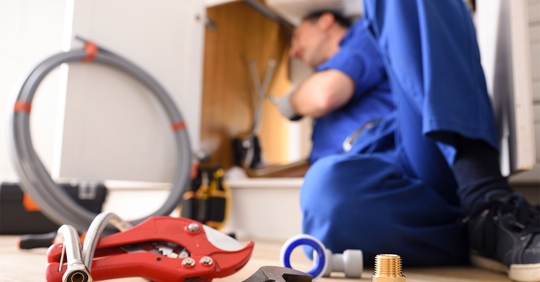Maintaining a properly functioning sewer system is essential for any homeowner, as environmental factors, soil conditions, and aging infrastructure can heavily influence its performance and lifespan. You don't need to be a certified plumber to conduct an initial sewer inspection. A DIY approach can help you identify early signs of potential problems before they develop into costly repairs, keeping your home's plumbing in excellent condition.
Why Regular Sewer Inspections Matter
Regular sewer inspections are crucial for preventing long-term issues. Shifting soil, moisture levels, or aging pipes can impact sewer line integrity, leading to cracks, leaks, or blockages. Routine checks help uncover minor problems before they escalate into major repairs.
Sewer backups can be particularly disruptive, causing unpleasant odors and even structural damage if left unattended. By conducting inspections regularly, you can reduce these risks and ensure waste flows out of your home effectively. This not only protects your investment but also supports a healthier environment for your household.
For homes with older plumbing systems, regular inspections are especially important. Aging infrastructure may be prone to leaks or blockages that require professional attention. Staying proactive with inspections can save money and preserve the overall integrity of your plumbing system.
Essential Tools & Equipment for a DIY Sewer Inspection
To conduct a DIY sewer inspection effectively and safely, you’ll need the right tools. A drain camera is indispensable, as it allows you to visually inspect the inside of your sewer lines. These cameras can often be rented or purchased from home improvement stores. Complement the camera with a flashlight or work light to inspect darker areas.
A plumbing snake or auger is equally essential, as it helps identify and address minor blockages. These tools can reach deep into pipes to break up obstructions. Additionally, protective gear like gloves and goggles is important to shield yourself from dirt and potential hazards.
Using recording equipment, such as a smartphone or notebook, can help document any issues you find. Keeping detailed records will be valuable if professional intervention from Smith's Plumbing Services becomes necessary, as it streamlines communication and ensures accurate recommendations.
3 Warning Signs of Sewer Issues
Early detection of warning signs can prevent costly repairs and ensure the reliability of your sewer system. Some indicators include:
- Slow-draining sinks or tubs – Often a signal of developing blockages within the sewer line.
- Unusual odors from drains – A red flag that sewer gases may be escaping into the home.
- Water pooling outside or soggy yard spots – Can indicate leaks or breaks in the sewer line.
Older plumbing systems may be more prone to these issues due to wear and deterioration. Addressing warning signs promptly can prevent property damage and reduce repair costs.
Step-by-Step Process for Performing a Basic Sewer Inspection
- Start at the sewer cleanout point, typically located outside your home.
- Insert a drain camera into the sewer line, moving it slowly to check for leaks, cracks, or blockages.
- Use a plumbing snake to clear minor blockages identified by slow drainage.
- Document your findings thoroughly for reference, especially if professional insights are needed later.
- Clean and maintain your tools after use to ensure longevity and readiness for future inspections.
Troubleshooting Common Problems Found During Sewer Inspections
- Minor blockages – Often caused by waste buildup or foreign objects; use a plumbing snake to clear them.
- Leaks – Small leaks can be temporarily managed with plumber’s tape, while larger ones require professional intervention.
- Cracks – Hairline cracks may be monitored, but significant damage should be addressed by professionals immediately.
Smith's Plumbing Services can provide expert solutions for complex issues, ensuring long-term sewer system functionality.
When to Seek Professional Help
While DIY inspections are helpful, certain problems require professional expertise. These include:
- Severe backflow problems
- Major leaks or pipe misalignment
- Tree root infiltration causing blockages or damage
- Recurring issues despite regular DIY inspections
Smith's Plumbing Services offers comprehensive service to ensure your plumbing remains reliable and efficient.
Understanding Regulations & Permits for Sewer Work
Significant sewer repairs or replacements may require permits to comply with local safety and building standards. While minor repairs typically don’t need permits, larger projects like full replacements often do. Professionals can help navigate these requirements to ensure compliance and avoid fines.
Smith's Plumbing Services can assist with permitting processes, simplifying compliance and bringing peace of mind.
The Impact of Weather & Soil on Sewer Lines
Soil composition and environmental conditions can have a significant impact on sewer lines. Shifting ground or soil prone to expansion and contraction may cause pipe misalignments or breaks. Additionally, moisture and temperature fluctuations can accelerate the deterioration of older pipelines, particularly those made from outdated materials.
Regular inspections help detect and prevent damage caused by these natural factors, supporting system longevity.
Long-Term Maintenance Tips for Your Sewer System
- Avoid flushing or draining inappropriate materials, such as grease, oils, or non-degradable products.
- Use enzyme-based cleaners regularly to help break down waste and prevent clogs.
- Schedule professional cleanings at least once a year to maintain system health.
- Keep a routine maintenance schedule, combining DIY inspections with professional evaluations.
Consistent care ensures your sewer system remains efficient, protecting your home from unnecessary damage and expenses.

